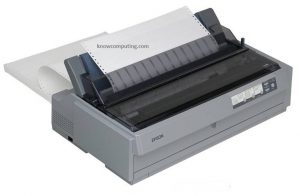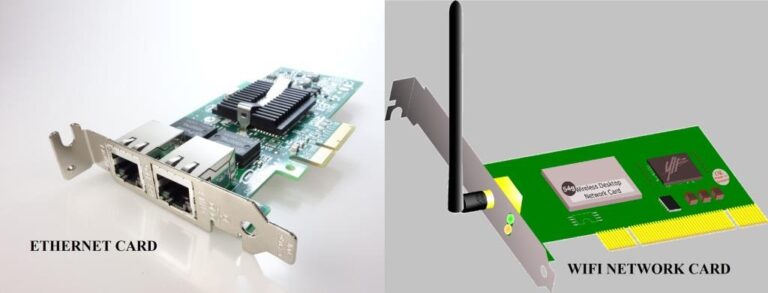Types of Printers Explained: Characteristics, Features, and How to Choose
A printer is an essential output device that transforms digital information (soft copy) into a tangible format (hard copy). Modern printers connect to computers via USB, Wi-Fi, or Bluetooth, offering seamless integration with devices like laptops, smartphones, and tablets.
The printer market offers a variety of types, including laser, inkjet, dot-matrix, drum, and the emerging 3D printers. These printers are differentiated by print quality, speed, noise levels, printing technology, and paper tray capacity.
This guide provides a comprehensive overview of printer types, their characteristics, and factors to consider when choosing the right printer for your needs.
Table of Contents
Key Functions of Printers
Printers are mostly used to convert digital files (soft copy) to physical documents (hard copy) or items for 3D printers. Printers also have internal RAM that are used to store jobs that can be printed when they are offline. Depending on the type of printer they can be loaded with a variety of materials for printing such as specialized papers, plastics or resin.
Factors to Consider When Selecting a Printer
Choosing the right printer depends on your specific needs and priorities. Key factors to consider include:
- Speed: Measured in pages per minute (PPM). Consider the volume of your printing needs. Also, consider the time it takes for the printer to begin printing after receiving the command.
- Paper Tray Size: The capacity of the input and output trays. This is important for high-volume printing.
- Cost: The initial purchase price and the ongoing cost of consumables (ink/toner, paper).
- Quality of Print: Measured in dots per inch (DPI). Higher DPI means sharper, more detailed prints.
- Interface to PC/connectivity: How the printer connects to the computer (USB, wireless).
- Functionality: Decide if you need additional features like scanning or faxing.
Classification of Printers and Their Characteristics
Printers are classified based on three main criteria: how they print data, how paper interacts with the printing mechanism, and printing technology. Below, we explore each category with examples and characteristics.
How Paper Interacts with the Printing Mechanism
This classification divides printers into two types:
Impact Printers
Impact printers use physical force to transfer ink from a ribbon to paper, similar to a typewriter. They are durable but less common today.
- Example: Dot matrix printers.
- Characteristics: Noisy, low resolution, ideal for carbon copies.
Non-Impact Printers
Non-impact printers use technologies like ink or lasers, avoiding direct contact between the printing mechanism and paper.
- Examples: Inkjet and laser printers.
- Characteristics: Quieter, higher quality, faster printing.
How Printers Print Characters
Printers are also categorized by how they print text or images:
Line Printers
Line printers print an entire line of text at once, making them efficient for high-volume tasks.
- Example: Drum printers.
- Characteristics: Fast but limited to text-heavy documents.
Character Printers
Character printers print one character at a time, offering precision for detailed outputs.
- Example: Daisy wheel printers.
- Characteristics: Slower, used for high-quality text printing.
Printing Technology
This classification is based on the underlying technology used to create the printed output. The most common types include:
Inkjet Printers
These non-impact printers create images by spraying tiny droplets of ink onto the paper through nozzles. Inkjet printers use either piezoelectric or thermal inkjet technology.

Advantages of Inkjet Printers:
- High-quality printouts, especially for color images.
- Quieter operation compared to dot-matrix printers.
- Lower initial cost compared to laser printers.
- Faster print speeds than dot-matrix printers.
- Individual ink cartridges are typically less expensive than laser printer toners.
Disadvantages of Inkjet Printers:
- Ink cartridges require frequent replacement, which can be costly over time.
- Higher cost per page compared to laser printers.
- Prints can smudge or blur if they come into contact with water.
- Nozzles are prone to clogging and damage.
Dot Matrix Printers
These impact printers are among the oldest types of printers. They function similarly to typewriters, using pins to strike an ink ribbon and transfer ink to the paper.

Advantages of Dot Matrix Printers:
- Low initial cost (although increasingly rare).
- Low cost per page.
- Ability to print carbon copies.
- Tolerance to varying environmental conditions, such as temperature.
- Compatibility with continuous-form paper.
Disadvantages of Dot Matrix Printers:
- Noisy operation.
- Slow printing speed.
- Primarily black and white printing.
- Low print quality compared to other technologies.
These non-impact printers use a toner cartridge containing powdered ink. The toner can be black or colored.

Advantages of Laser Printers:
- Excellent print quality.
- Fast printing speeds.
- Quiet operation.
- High print resolution.
- Reliable performance.
- Prints are not affected by water.
Disadvantages of Laser Printers:
- High initial cost.
- Toner cartridges are more expensive than inkjet cartridges.
- Bulky design.
3D Printers
This emerging technology, also known as additive manufacturing, creates three-dimensional physical objects rather than text or images on paper. 3D printers build objects layer by layer from a digital design.
Plotters
While technically not printers, plotters serve a similar function. They produce hard-copy output, but instead of using dots, they draw lines using pens. Plotters are primarily used for creating blueprints and technical drawings.

What are Printer Consumables?
Printer consumables are items that need periodic replacement during the printer’s lifespan. Factoring in the cost and frequency of replacement is crucial when budgeting for printer operation. Common printer consumables include:
- Toner Cartridges: Used in laser printers. Contain powdered ink and are replaced when empty.
- Printer Drum: A component in laser printers that transfers toner to the paper. May need replacement if print quality degrades.
- Ink Cartridges: Used in inkjet printers. Contain liquid ink and are replaced when empty.
- Printer Fuser: A component in laser printers that uses heat and pressure to fuse toner to the paper. Problems with the fuser can cause print quality issues.
- Printing Papers: The type of paper used can affect print quality and, in some cases, printer performance. Printer manufacturers often recommend specific paper types.
What is a printer?
A printer is an output device that converts digital information into a physical copy on paper.
What are the main types of printers?
The main types include inkjet, laser, dot matrix, 3D, thermal, and all-in-one printers, each suited for specific tasks like home printing or industrial prototyping.
How do I choose the right printer for my needs?
Consider print volume, quality, speed, connectivity, and budget. For home use, choose inkjet; for offices, opt for laser; for prototyping, select 3D.
What are printer consumables?
Printer consumables are items that need periodic replacement, such as ink cartridges, toner, fusers, drums and paper.



